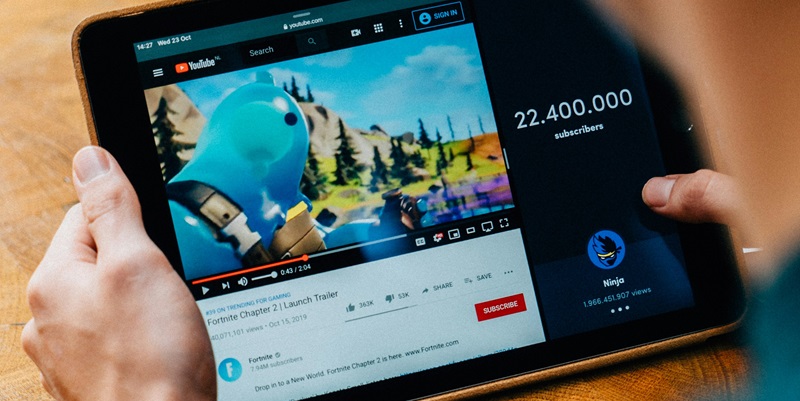Instacart, the leading online grocery platform in North America, has announced a significant extension of its retail media data capabilities to YouTube. Following a successful collaboration with Google Shopping Ads earlier this year, Instacart aims to enhance shoppable reach for advertisers through its fulfillment network. The new feature allows select brand partners, starting with Clorox and Publicis Media, to transform YouTube ads into immediately shoppable experiences. By leveraging Instacart’s first-party data, these brands can target high-intent consumers, enabling direct purchases from YouTube ads and ensuring same-day delivery.
Strengthening Digital Customer Engagement
Leveraging First-Party Data for Precision Targeting
Fidji Simo, CEO of Instacart, asserted that integrating video creatives with Instacart’s robust data streamlines shopping experiences, from discovery to actual purchase. Instacart’s use of first-party data allows brands to precisely target high-intent consumers, significantly enhancing the probability of conversions. By harnessing data related to consumers’ past purchases and nutritional preferences, Instacart facilitates direct connections between brands and potential buyers. This capability to deliver personalized shopping experiences to YouTube viewers strengthens the overall effectiveness of retail media campaigns.
Tiffany Tan from Clorox and Joel Lunenfeld of Publicis Media have underscored the immense value this integration brings by making retailer engagement more direct and compiling consumer purchase paths. The dynamic partnership with Instacart reduces the number of steps a consumer must take between initial ad exposure and final product acquisition, thus simplifying and accelerating the shopping journey. By utilizing Instacart’s comprehensive data, brands can provide a seamless e-commerce experience that meets consumers exactly where they are—on their favorite digital platforms.
Real-Time Shopping Experiences on YouTube
The integration of Instacart’s retail media data with YouTube specifically leverages the immense watch time that YouTube garners. Nielsen’s Gauge data highlight YouTube’s supremacy in streaming and TV watch time, offering an unparalleled opportunity for brands to engage with potential customers. Additionally, a recent Google/TalkShoppe study reaffirmed YouTube’s role as a primary platform for product research, making it a strategic choice for integrating shoppable ads. Over 30 billion hours of shopping-related content were consumed on YouTube in 2023 alone, showcasing the platform’s colossal influence on consumer purchasing decisions.
By converting YouTube ads into shoppable experiences, Instacart ensures that viewers can quickly act on their product interests. The ease of clicking on a YouTube ad to purchase through Instacart not only caters to the consumer’s desire for immediate gratification but also benefits brands with instantaneous transaction potential. This real-time capability reshapes the digital ad landscape by reducing the friction between product recommendation and actual purchase, leading to an elevated level of consumer satisfaction and engagement.
Expansion of Instacart and Google Shopping Partnership
Enhancing Campaign Effectiveness Through AI-Powered Merchandising
Instacart’s extension into YouTube marks another critical development in its broader partnership with Google Shopping. Brands like Danone and Nestlé USA have already experienced significant performance boosts using Instacart’s AI-driven merchandising. Instacart’s advanced algorithms take into account a myriad of data points such as nutritional preferences, past purchases, and other consumer behavior indicators. This ensures that the ads are not only relevant but also highly effective in converting interest into sales.
The comprehensive approach that Instacart applies to its data utilization allows brands to optimize their ad spend by focusing on high-intent consumers who are most likely to make purchases. This results in more cost-effective and impactful advertising campaigns. As brands continue to see success through this enriched data environment, the broader implications for the retail media landscape become apparent. The effective harnessing of AI to analyze and act on consumer data can set a precedent for future advertising strategies, significantly enhancing how brands interact with their target audiences.
Benefits Beyond the Instacart Platform
Instacart, North America’s premier online grocery platform, has unveiled a major expansion of its retail media data capabilities to YouTube. This development follows a successful partnership with Google Shopping Ads earlier this year. Instacart’s new feature aims to elevate shoppable opportunities for advertisers via its extensive fulfillment network. This initiative enables select brand partners, beginning with Clorox and Publicis Media, to convert YouTube ads into instantly shoppable experiences. By utilizing Instacart’s proprietary first-party data, these brands can precisely target consumers with high purchasing intent, facilitating direct purchases from YouTube ads and guaranteeing same-day delivery. This enhancement is strategically designed to boost engagement and sales by allowing viewers to seamlessly transition from ad viewing to purchasing without leaving YouTube. Instacart’s move signifies a significant step in integrating digital advertising with online shopping, bringing unparalleled convenience to both brands and consumers, and potentially transforming the online retail landscape.

